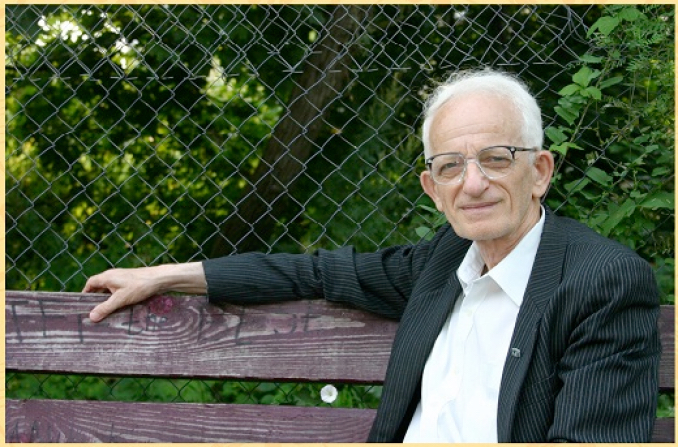
By Ulrike Granögger
Professor of Biophysics at Moscow State University and Head of the Laboratory of Physical Biochemistry at the Institute of Biophysics in Pushkhino, member of the Russian Academy of Science and author of more than 200 scientific articles and a book on the history of science in Russia
For his outstanding scientific achievements he received the Lev Nikolaev Gold Medal (2013) “for significant contributions to the education, popularization of science and culture”.
While still almost completely unknown in the West, Prof. Shnoll’s discovery and proof of existence of discrete states (statistical regularities) or vibrational modes within the fluctuations of processes of all kinds has the power to change our fundamental concepts of physics and biology, even of space and time entirely.
In 1998 he published an important paper in Uspekhi Fisicheskikh Nauk, Russia’s foremost physics journal in which he described his discovery and more than 30 years of painstaking investigation of a phenomenon first noticed in 1951 in a biological reaction process. The histogram (or frequency distribution of fluctuations) of the process did not smooth out in a bell curve or normal distribution but showed discrete states that were re-enforced over time.
At first Shnoll thought of errors in the measuring setup but being the meticulous researcher that he is this explanation was eventually ruled out. He did not give in to the tendency in physics to disregard fluctuations as randomness and to even out the measurements into normal distribution. Instead he discovered that these discrete states in the fluctuations can be seen also in other processes, even in nuclear decay processes, quantum-physical events that are the classic example of fundamental unpredictability or randomness.
Over 5 decades he has conducted literally thousands if not a hundred thousand of experiments measuring processes – from biochemical, to physical, to nuclear and quantum physical – and produced a library of histograms that demonstrate that time (and most likely space) is heterogenous and fractal.
Through the work of Simon Shnoll it is now an empirical fact that 1) processes that occur at the same local time regardless of their nature will have the same fine structures of histograms and 2) that similar fluctuations in the distribution shapes of the histograms recur at astrophysical time periods, such as just under 24 hours corresponding with the sideral day (not the solar day), 27.28 days and at intervals of close to a year.
The sheer volume of the accumulated data shows that there are around 20 histogram patterns that seem recur most. There is, as yet, no theory to describe the effect but many hypotheses that include a connection to gravity as well as the nature of space and time.
Simon Shnoll is a true scientist and a hero not only for the discovery of a fundamental effect of time that may yet make him known as one of the most important scientists of our age, but also for a life of painstaking research under great personal sacrifice undeterred by the theoretical paradigm of expected results and personally spending thousands of hours on fundamental research that is now available to future generations.
Links:
His monograph Cosmophysical Factors in Stochastic Processes, translated from the original Russian edition and published in 2012 can be read and downloaded online.
Here is an excellent video series in Russian but with good English subtitles, “The Faces of Time”
(please watch at least up to segment 3)
Other articles:
“On the Dependence of a Local-Time Effect on Spatial Direction”, by Victor A. Panchelyuga and Simon E. Shnoll
PROGRESS IN PHYSICS Volume 3, (July 2007)
“Dynamical 3-Space: Observing Gravitational Wave Fluctuations and the Shnoll Effect using a Zener Diode Quantum Detector”, by David P. Rothall and Reginald T. Cahill
PROGRESS IN PHYSICS Volume 10, Issue 1 (2014)
Related reading:
